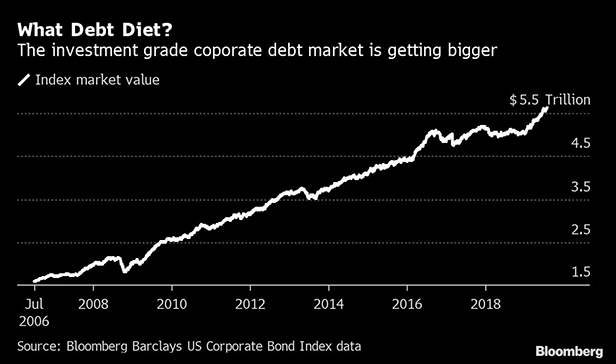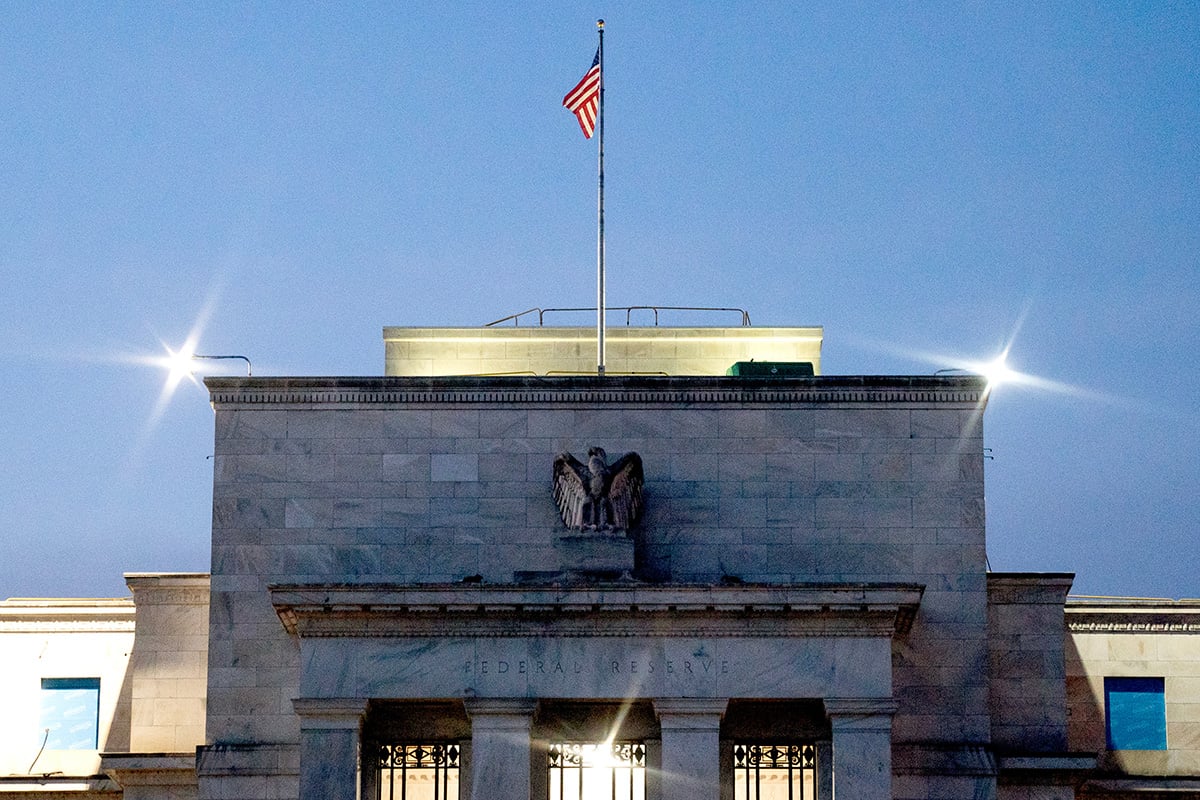The great deleveraging that was supposed to sweep over corporate America is dead. Or, at least, on hold.
Blue-chip companies have begun to ramp up borrowing again as central banks globally flood economies with money. Liabilities have reached their highest level relative to income since 2009, according to Morgan Stanley's analysis of second-quarter data. As of last Thursday, the number of companies selling investment-grade debt in September had surged 63 percent from the same period last year.
It wasn't supposed to be this way. Last year and at the beginning of 2019, corporations ranging from Verizon Communications Inc. to Tupperware Brands Corp. talked about their goals to cut debt levels. Companies were under pressure from both stock and bond investors who worried about borrowers' liabilities. Around 40 percent of investment-grade companies now have obligations that are more consistent with junk ratings, according to Morgan Stanley. (Credit rating agencies use multiple factors beyond leverage to assess a company's debt rating.)

For many companies, debt levels are now creeping higher, either by choice or involuntarily. Revenues are under pressure, and money is easy to raise. That tempts corporations to borrow to fund share buybacks and other moves that can boost earnings measures.
The rising debt burdens that have resulted could make it harder for corporations to navigate any downturn that may be coming. Companies could find themselves with less cash to pay their obligations, and refinancing maturing bonds could be more difficult and expensive.
"You would expect companies, as they sense the economy slowing, to start to prepare themselves to absorb what would likely be an impact to revenue," said Jim Schaeffer, deputy chief investment officer at Aegon Asset Management in Chicago, which manages $380 billion of assets. "Instead, they're looking at the incredibly inexpensive cost of debt and taking advantage of that to enhance returns for shareholders."
Debt levels were growing even before the Federal Reserve started cutting interest rates in July. The ratio of a key income measure to net debt levels rose to 1.9 times at the end of the second quarter, a record high, according to Morgan Stanley research. The figure was closer to 1.76 times in the same quarter last year. That ratio was hurt by falling earnings and rising debt loads, as well as declining cash levels, Morgan Stanley strategists led by Vishwas Patkar wrote last week.
The falling levels for the key income measure EBITDA (earnings before interest, tax, depreciation and amortization) are also hurting companies' ability to pay interest on their borrowings. The ratio of EBITDA to companies' interest expense, known as the debt service coverage ratio, has fallen to 10.14 times—the lowest level since 2010, according to Morgan Stanley.
Effect on Corporate Financials
The growing leverage levels can be seen in individual companies' results. Tupperware's total debt had climbed to more than $1 billion at the end of June, from $889 million at the end of 2018, while its sales and earnings have been falling. The shift was enough for S&P Global Ratings to cut the company in August to junk from BBB-, the lowest investment-grade rating.
Tupperware's lack of sales growth and a financial performance that isn't meeting its executives' expectations are slowing the pace at which the company will meet its target for debt to EBITDA, said Jane Garrard, vice president of investor relations at the Orlando, Florida-based company.
Some companies have managed to trim their debt loads. Verizon posted total debt of $134.8 billion for the end of the second quarter, down from $135.6 billion in the first quarter. Its borrowings also fell relative to EBITDA over that period, according to data compiled by Bloomberg. Kraft Heinz Co. had cut its total borrowings to $31.8 billion as of the end of June, down from $34.2 billion in the same period a year ago.
Decade of Debt
Investment-grade companies are selling so much debt because investors are eager to gain more yield as the Fed cuts rates. September has been one of the busiest months on record, with corporations having sold more than $150 billion of high-grade bonds. For junk-rated companies, the story is in many cases different, as the riskiest of the risky have struggled to borrow.
Overall, blue-chip companies' debt loads have been rising for most of the last decade, as they've financed acquisitions, bought back stock, and taken other moves designed to boost earnings per share. The total value of U.S. investment-grade corporate bonds stands around $5.8 trillion, a record and more than triple the level in October 2008. Companies are hoping they can pay down some of that debt as profits roll in.
Companies' debt levels may not end up being a huge problem for corporate bonds, according to Dominique Toublan, head of U.S. credit strategy at BNP Paribas. The borrowers at the bottom end of the investment-grade spectrum, those rated in the BBB tier, don't have much room to borrow more, so debt levels can rise only so much.
"We don't feel like it's a big headwind for the market. It's more like the tailwind is slowing down and it's okay," Toublan said.
Investors Complacent?
Companies may believe the economy is doing just fine and there's time to pay down debt later. Recent indicators suggest that growth may be better than investors feared earlier this year, which sent the Bloomberg U.S. Economic Surprise Index to an 11-month high this week. And lower bond yields often allow companies to cut their interest costs when they refinance debt, which could improve measures like debt service coverage ratios.
But corporate spending is still weak, and economists see a growing chance of a recession, according to a Bloomberg survey this month. Gains from lower interest costs may be offset by falling earnings. High-yield companies are facing downgrades, relative to upgrades, at the fastest pace since 2009, according to Bloomberg data.
Rising leverage levels may be signaling something important: Companies themselves aren't really performing better now, even if their securities are doing well, Morgan Stanley's Patkar said in an interview.
"Maybe investors are being complacent about fundamentals also starting to improve," Patkar said.
© 2025 ALM Global, LLC, All Rights Reserved. Request academic re-use from www.copyright.com. All other uses, submit a request to [email protected]. For more information visit Asset & Logo Licensing.




